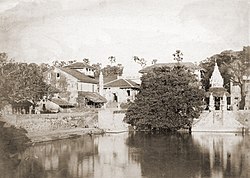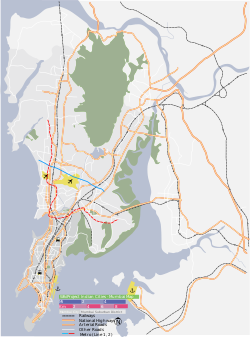| Walkeshwar Temple | |
|---|---|
 The Temple and Tank of Walkeshwar at Bombay by Edwin Lord Weeks | |
| Religion | |
| Affiliation | Hinduism |
| Deity | Shiva |
| Location | |
| Location | Malabar Hill, Mumbai |
| State | Maharashtra |
| Country | India |
| Geographic coordinates | 18°56′42″N72°47′38″E / 18.945°N 72.794°E |
| Architecture | |
| Completed | 1127 |



Walkeshwar Temple, also known as the (Baan Ganga Temple), is an Ancient Hindu temple, dedicated to Lord Shiva located in Walkeshwar, near Malabar Hill neighbourhood, in South Mumbai precinct of the city of Mumbai, India. It is situated at the highest point of the city, [1] and close to the temple lies the Banganga Tank.












